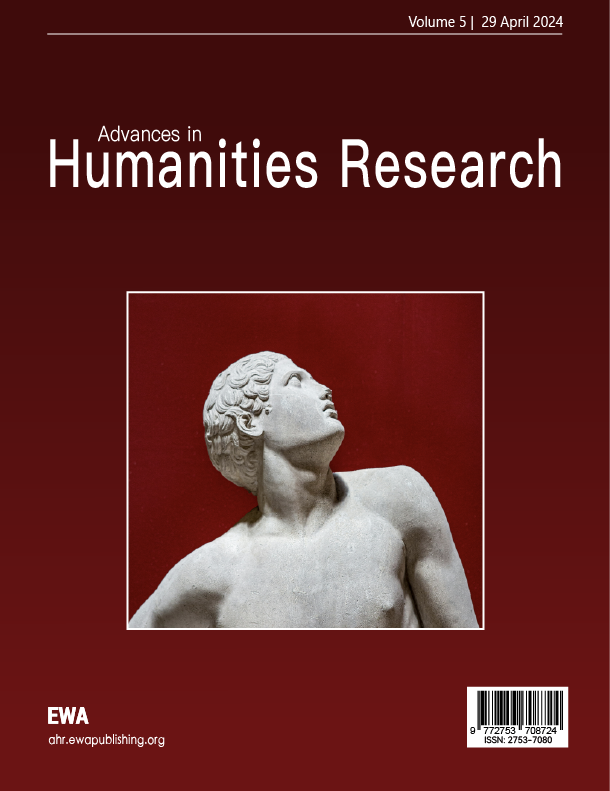References
[1]. Levenson, J. R. (1952). T'ien-hsia and Kuo, and the “Transvaluation of Values”.The Journal of Asian Studies,11(4), 447-451.
[2]. Pines, Y. (2002). Changing views of" tianxia" in pre-imperial discourse.Oriens Extremus,43, 101-116.
[3]. Pines, Y. (2012). The everlasting empire: The political culture of ancient China and its imperial legacy. Princeton University Press.
[4]. Wang, M. (2012). All under heaven (tianxia) Cosmological perspectives and political ontologies in pre-modern China.
[5]. Pines, Y. (2021). Limits of all-under-heaven: ideology and praxis of 'great unity’in early Chinese Empire.The Limits of Universal Rule: Eurasian Empires Compared, 79-110.
[6]. Liu, J. (2006). The evolution of tianxia cosmology and its philosophical implications.Frontiers of Philosophy in China, 1, 517-538.
[7]. Zhao, T. (2006). Rethinking empire from a Chinese concept 'All under Heaven’(Tian-xia, ).Social Identities, 12(1), 29-41.
[8]. Mo, X. (2017). The "Tianxia–Tribute" system and its worldview of order. “天下—朝贡”体系及其世界秩序观, China Social Sciences Press.
[9]. Pines, Y. (2005). Beasts or humans: pre-imperial origins of the “Sino-barbarian” dichotomy. InMongols, Turks, and others(pp. 59-102). Brill.
[10]. Lewis, M. E. (2009). The early Chinese empires (Vol. 1). Harvard University Press.
[11]. Luo, Z. (2008) From “tianxia” (all under heaven) to “the world”: changes in late Qing intellectuals' conceptions of human society,Social Sciences in China, 29: 2, 93-105, DOI: 10.1080/02529200802091276
[12]. Zhang, F. (2012). The Tsinghua approach and the inception of Chinese theories of international relations.Chinese Journal of International Politics,5(1), 73-102.
[13]. Zhao, T. (2009). A Political World Philosophy in terms of All-under-heaven (Tian-xia).Diogenes,56(1), 5-18.
[14]. Cox, R. W. (1981). Social forces, states and world orders: Beyond international relations theory.Millennium: Journal of International Studies, 10(2), 126–155.



